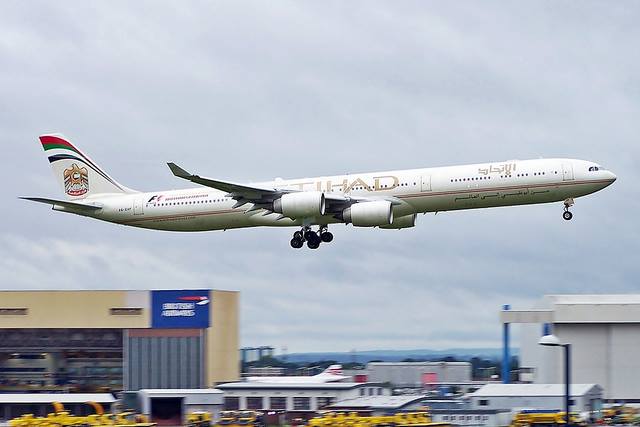According to a GCAA investigation report, an Etihad Airbus A340-600 diverted to Singapore when the aircraft suffered an intermittent obstruction of the aircraft left side pitot probes while en route over the Indian Ocean.
On February 2, 2013, an Airbus A340-600 aircraft, registration A6-EHF, operating a scheduled passenger flight to Melbourne International Airport, Australia, departed Abu Dhabi International Airport at approximately 19:35 UTC. There were a total of 295 persons onboard: 17 crew members and 278 passengers. The captain was the pilot flying and the first officer was the pilot monitoring.
While cruising at FL350, just leaving the Colombo FIR and entering the Melbourne FIR, the aircraft encountered moderate to heavy turbulence, and experienced significant airspeed oscillations on both the captain’s and the standby airspeed indicators. The autopilot, autothrust, and flight directors disconnected automatically. The flight control law changed from “Normal” to “Alternate” Law, leading to the loss of some flight mode and flight envelope protections. Changes from Normal to Alternate Law occurred twice; thereafter the aircraft remained in Alternate Law until the end of the flight. The autothrust system and the flight directors were successfully re-engaged, however, neither autopilot (autopilots 1 or 2) could be re-engaged, thus the aircraft was flown manually until landing. In addition to the system anomalies, the aircraft experienced high N1 vibration on the No. 2 engine. As the aircraft had lost capability to maintain Reduced Vertical Separation Minima (RVSM) the flight crew decided to divert to Singapore-Changi International Airport. The diversion required the flight crew to dump fuel in order to land the aircraft below its maximum landing weight.
The landing was uneventful and none of persons onboard were injured.
Causes
1. The cause of the Unreliable Airspeed Indication Serious Incident was the intermittent obstruction of the Aircraft left side pitot probes due to, most probably, accumulations of ice crystals.
2. The cause of the No. 2 engine N1 high vibration was the ingress of water through a gap created after the Omega Seal disbanded. The water froze to ice, which entered and passed through the spinner fairing and accreted under the annulus fillers.
Contributing Factors to the Incident
1. An incorrect weather radar tilt setting was selected. Accordingly, there was no predictive detection of the cumulonimbus cloud that may have enabled the crew to take avoidance maneuvers.
2. The ambient temperature and the Aircraft altitude were outside the icing envelope parameters of the JAR specification and the manufacturer’s design requirements for pitot probes.

